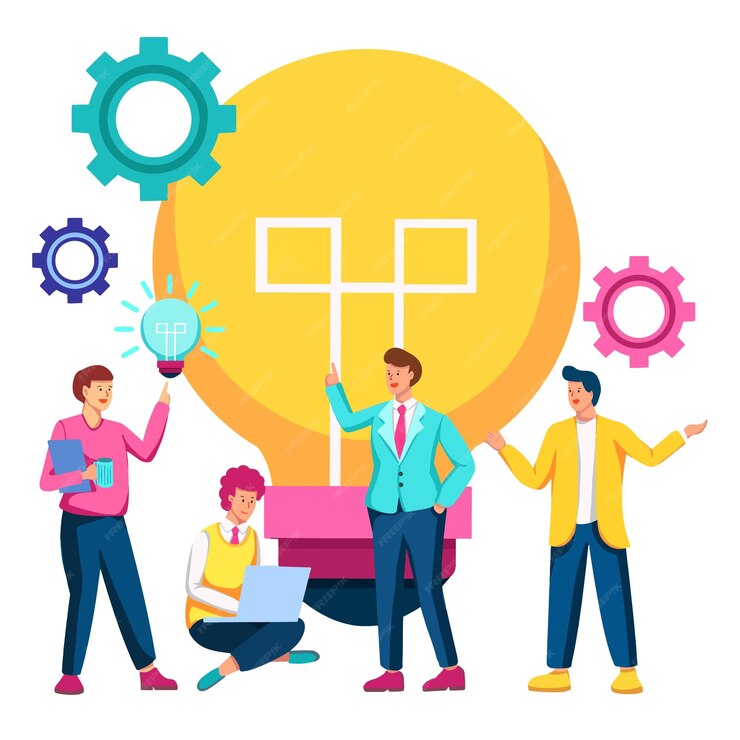The Significance of Developing Training and Development Programs in Small and Medium Enterprises
Introduction:
In today’s competitive business landscape, small and medium enterprises (SMEs) face numerous challenges in staying relevant and thriving. One pivotal strategy for their success is the development of robust training and development programs. These initiatives not only enhance employee skills but also foster innovation and adaptability, essential qualities for SMEs aiming to grow and succeed in dynamic markets.
The importance of developing training and development programs in small and medium-sized companies:
Enhancing Employee Skills and Knowledge
Investing in training and development programs allows SMEs to nurture their employees’ talents and capabilities. By providing continuous learning opportunities, businesses can ensure that their workforce stays updated with the latest industry trends and best practices.
Employee engagement and satisfaction levels also rise when individuals feel valued and invested in. As they acquire new skills, they become more versatile and adept at handling diverse tasks, contributing significantly to the company’s overall efficiency and productivity.
Fostering Innovation and Creativity
Small and medium enterprises often operate in niches where innovation is key to staying ahead of the competition. Training programs that encourage creativity and critical thinking empower employees to generate fresh ideas and solutions to complex challenges.
Improving Employee Retention
A well-designed training and development program demonstrates a company’s commitment to its employees’ growth and advancement. This, in turn, enhances employee loyalty and reduces turnover rates. When employees see opportunities for career progression within the organization, they are more likely to stay long-term, saving the company recruitment and onboarding costs.
Adapting to Market Changes
In today’s rapidly evolving business environment, adaptability is crucial for survival. Training programs equip employees with the skills needed to navigate changes effectively. Whether it’s adopting new technologies or adjusting to shifts in consumer preferences, a skilled and adaptable workforce enables SMEs to remain agile and responsive.
Boosting Employee Morale and Confidence
Providing training opportunities shows employees that their professional development is a priority for the company. As they acquire new skills and knowledge, their confidence in performing their roles increases. This boost in morale leads to a more positive work environment, where employees feel motivated to excel and contribute to the company’s success.
Strengthening Company Reputation
Investing in training and development reflects positively on an SME’s reputation as an employer. Businesses known for prioritizing employee growth and well-being attract top talent in the industry. Additionally, a skilled and competent workforce enhances the quality of products and services offered, further bolstering the company’s reputation among customers and partners.
Driving Business Growth and Sustainability
Ultimately, the development of training programs aligns with SMEs’ long-term growth objectives. By nurturing talent, fostering innovation, and building a resilient workforce, businesses position themselves for sustained success in the marketplace. Moreover, skilled employees are better equipped to identify growth opportunities and contribute to the company’s bottom line.

FAQs:
How do training programs benefit small businesses?
Training programs help small businesses enhance employee skills, foster innovation, improve retention rates, adapt to market changes, boost morale, strengthen company reputation, and drive business growth.
Are training and development programs costly for SMEs?
While there is an initial investment involved, the long-term benefits of training and development programs far outweigh the costs. Additionally, there are cost-effective training solutions available, such as online courses and workshops.
How can SMEs measure the effectiveness of their training programs?
SMEs can measure the effectiveness of training programs through employee feedback, performance metrics, and tracking the application of newly acquired skills in the workplace. Regular assessments and evaluations help identify areas for improvement.
What role do leadership and management play in implementing training programs?
Leadership and management play a crucial role in setting the tone for a learning culture within the organization. They must champion training initiatives, provide support and resources, and lead by example to ensure the successful implementation of training programs.
How can SMEs ensure training programs remain relevant in a rapidly changing business environment?
SMEs can keep their training programs relevant by staying informed about industry trends, consulting with subject matter experts, seeking feedback from employees, and regularly updating the curriculum to align with evolving business needs.
Are there government incentives or support available for SMEs implementing training programs?
Many governments offer incentives, grants, or subsidies to encourage SMEs to invest in employee training and development. SMEs should explore these opportunities to offset costs and maximize the benefits of training initiatives.
Conclusion:
In conclusion, the significance of developing training and development programs in small and medium enterprises cannot be overstated. These initiatives contribute to employee growth, foster innovation, improve retention rates, enhance company reputation, and drive business growth and sustainability. By prioritizing continuous learning and skill development, SMEs can position themselves for success in today’s competitive business landscape.









 FAQs
FAQs








